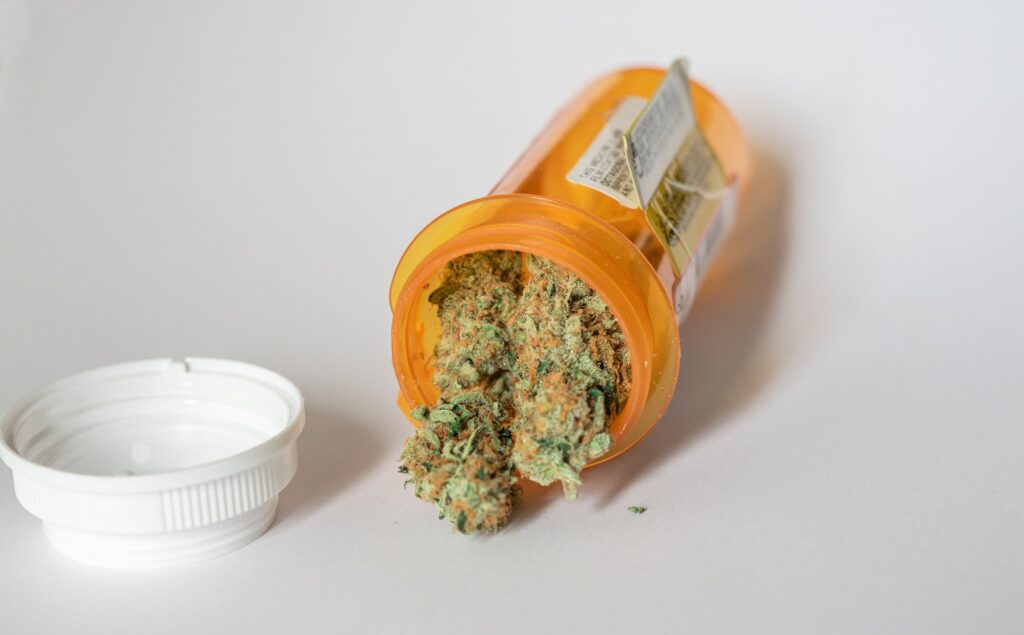Hello, and welcome to the club! We’d want to welcome you to our community, first and foremost. Second, we’d want to discuss Indica and Sativa with you. Many of you have undoubtedly heard about them before!
Indica and Sativa are two types of cannabis that almost everyone is aware of. What exactly are Indica and Sativa, though? Is there a difference between the two? Is it true that this is the only method for measuring marijuana strains’ effects? There’s a lot of discussion among specialists about the distinction between Indica and Sativa.
That’s precisely what we do. “Louisiana Medical Marijuana Doctors” is here to assist you with all of your questions regarding medical marijuana in the state, from identification cards to plants and everything in between. We offer not just telemedicine, but also information on all things cannabis in Louisiana.
In this blog, we’ll discuss the origins of Indica and Sativa categories, some fundamentals about what they are, and what you should be looking for when buying strains at your local pharmacy. Here’s everything you need to know about Indica and Sativa!
History: Indica and Sativa
We must look at how the two types came into being in order to understand the contention surrounding Indica and Sativa. Since the 1700s, Indica and Sativa have both been part of the cannabis lexicon. Cannabis sativa, according to Swedish botanist Carl Linnaeus in his book Species Plantarum published in 1753, was the first to be classified and given a name.
Cannabis indica was designated as a distinct species from Cannabis sativa in 1785 by French biologist Jean-Baptiste Lamarck for how they appear. Indica plants were characterized by Lamarck as having dark green, broader leaves, and Sativa plants as having narrower and lighter leaves.
Dmitrij Janischewsky, a Russian botanist, discovered Cannabis ruderalis as the third cannabis species in 1930. This categorization was based on the plant’s blossoming qualities rather than its leaf appearance. Janischewsky observed that ruderalis plants flowered 20-40 days after germination instead of depending on sunlight like Sativa and Indica plants.
Richard E. Schultes and Loran Anderson popularized the three-species hypothesis in the 1970s, identifying Indica, Sativa, and ruderalis as separate species of cannabis. However, rather than relying on visual features or flower budding to distinguish these categories, they were defined by their differing ratios of THC and CBD. They claimed that Indica strains had higher THC to CBD ratios while Sativa strains had lower THC to CBD ratios.
During the late 1950s and early 1960s, advocates of cannabis taxonomists Peter Taylor and Ernest Small maintained that there was only one Cannabis species on Earth, which they called Cannabis sativa. They also said that although the terms “Sativa” and “Indica” were used by humans to describe races of cannabis plants, these subcategories were invalid.
The taxonomy of marijuana has always been evolving and shifting. Botanists now believe that the Sativa and Indica subspecies, identified by Small and Cronquist, were in existence before human intervention. Terpenes and cannabinoids have also been acknowledged as previously overlooked marijuana components that play a role in its effects.
We do know that this is the case, as there are currently five distinct types of cannabis, each with its own set of advantages and disadvantages. The terms Indica and Sativa were coined for botanists rather than pharmacologists. This suggests that Indica and Sativa aren’t so much defined by their bodily effects as they are by the plants’ physical appearance.
I’m sure I know what your next question is going to be. Why do we still use the words Indica and Sativa, when they were originally intended for botanists rather than pharmacologists? Because their genuine significance has changed socially since the early days, we still utilize these names today. Today, when we speak about Sativa, we’re talking about the cannabis variety with tall, thin leaves that are supposed to provide an energizing impact. When it comes to Indica, we mean a cannabis plant with broad, robust leaves that are thought to provide a calming and full-body high.
Although Cannabis indica accounts for the majority of cannabis on the market, both terms are still used to categorize thousands of marijuana strains.
Sativa vs Indica
Although there are various techniques for determining the effects of a certain marijuana strain, Indica and Sativa are two popular names that are frequently used within the cannabis community and at pharmacies when you purchase your medical marijuana.
When people talk about Indica or Sativa strains, they’re usually referring to Indica as being physically sedating and soothing, whereas Sativa is having a more energizing and uplifting cerebral impact. Indica is excellent for unwinding and “Netflix and chill” for the night, whereas Sativa is better for getting things done on your to-do list and creative endeavors. Hybrids are also available that offer a nice balance of the two!
Sativa: What is it?
Sativas are for individuals who tend to develop a “head high.” This means that Sativas offer you a more mental uplifting and stimulating impact. They’re wonderful for relieving tension and anxiety since they can help you focus better and feel happier, more creative, and more motivated.
Sativa strains are popular among consumers due to their reputation as uplifting and euphoric. Because they give off energy, they’re a fantastic strain to use during the day. You can still get the benefits of medical marijuana while remaining productive and completing your to-do list!
Some most Common Sativa strains:
- Sour Diesel
- Durban Poison
- Super Silver Haze
- Strawberry Cough
- Super Lemon Haze
Indica: What is it?
Indica is often dubbed “on the couch.” They provide a comprehensive body impact that makes your body feel calm, peaceful, and sometimes heavy. Indica strains are particularly beneficial for persons who need assistance relaxing and have trouble sleeping.
Indica strains have been described as making you feel at ease, calm, and drowsy. They’re ideal for unwinding at night when you need to relax, and they can help people with chronic or intractable pain!
Some most Common Indica strains:
- Blueberry
- Bubba Kush
- Purple Punch
- Northern Lights
- Granddaddy Purple
Hybrids: What are they?
There are several hybrids available, which give you the benefits of both Sativa and Indica strains! Hybrid strains are developed for both Indica and Sativa plants. Because marijuana plant breeding has been done for such a long time and in secret owing to legislation, the majority of marijuana plants are mixed breeds containing elements from both Indica and Sativa. While many strains are incorrectly labeled as indica or sativa when they are actually a mix of both subspecies, some strains are pure Indica or Sativa.
Because hybrid strains of marijuana are derivatives of both Indica and Sativa plants, they have the qualities of both. It all comes down to which strain is more prominent or, as it’s known in the trade, which strain is the “parent” strain.
Some most common hybrid strains are:
- Gelato
- OG Kush
- White Widow
- Wedding Cake
- Pineapple Express
Most Effective Indicators of Strained Effects
Although Indica, Sativa, and hybrid are three categories of marijuana, they aren’t particularly reliable when it comes to predicting the physiological effects of cannabis strains. As we previously explained, the Sativa and Indica categories are for the botanist to identify marijuana subspecies based on appearance rather than effects. Cannabinoids and terpenes may provide better information about the effects particular strains have.
Cannabinoids:
Hundreds of chemical compounds combine to create the effects produced by various strains of marijuana. THC (tetrahydrocannabinol) and CBD are two major cannabinoids that are well-known and popular. The psychoactive properties of marijuana are brought about by THC. Cannabis oil containing high levels of CBD is a non-psychoactive chemical. Both THC and CBD have therapeutic effects that assist with inflammation, pain, post-traumatic stress disorder, sleeplessness, anxiety, and a slew of other ailments!
Because cannabis contains various cannabinoids that operate together in the body, it’s a great idea for novices to start by learning about THC and CBD. Instead of focusing on whether a strain is Indica or Sativa, consider whether it’s Indica or Sativa when selecting which strains to use.
THC-dominant strains are better for individuals who are comfortable with the typical “high” that is associated with marijuana. This generates a euphoric sensation and can assist with pain, sadness, anxiety, and sleeplessness. If you try a THC-dominant strain and experience negative side effects, look for one that has a higher proportion of CBD.
The high from THC-rich strains is very distinct, as opposed to the dronabinol pill or oil. CBD-dominant strains have much less THC and are ideal for people who don’t want to get high. They’re fantastic for individuals who need to medicate but also desire a clear head.
You can also receive a well-balanced plant that has similar THC and CBD amounts. These can provide you with a moderate psychotropic effect while also relieving symptoms! A strain that is more balanced is great for individuals who are inexperienced with cannabis therapy.
Terpenes:
Aside from cannabinoids, the next thing to be concerned about when it comes to marijuana is terpenes. Terpenes are simply the “aromatherapy” aspect of marijuana in a nutshell. They’re aromatic compounds that may be found in plants and fruit such as oranges, lavender flowers, thyme, peppercorn, and peppermint.
Limonene, myrcene, caryophyllene, terpinolene, and pinene, are just a few of the most common terpenes found in marijuana. These give off herbal, piney, peppermint, citrusy, and fruity scents that might produce a variety of effects ranging from calm to intense energy. Each terpene has its own set of effects. Some may make you feel joyful, calm, drowsy, or attentive.
Take These Tips with You:
Marijuana is a highly subjective experience. Everything varies from one person to the next. One person’s pleasure may be another person’s agony. It all depends on what you want. Strains might offer relief in a variety of areas. Some strains are helpful for particular health issues and provide comfort. Keep an eye out not just for Indica or Sativa strains, but also for cannabinoids and terpenes when shopping at the pharmacy next time!
Louisiana Medical Marijuana Doctors
4718 Paris Ave, New Orleans, LA 70122
(504) 442-9634
https://lamedicalmarijuanadoctors.com/
Facebook: https://www.facebook.com/lammdoctors
Instagram: https://www.instagram.com/lammdoctors/








